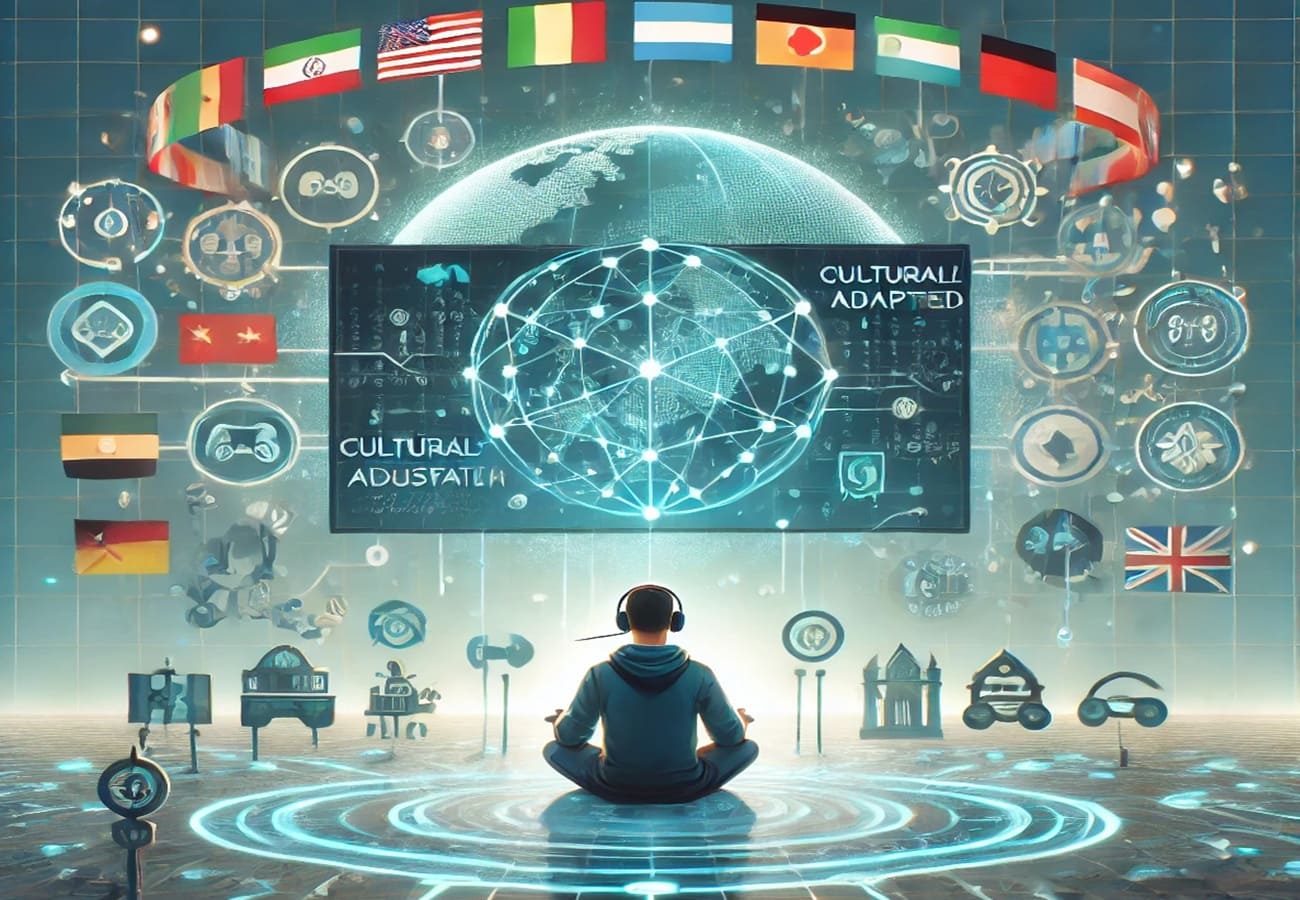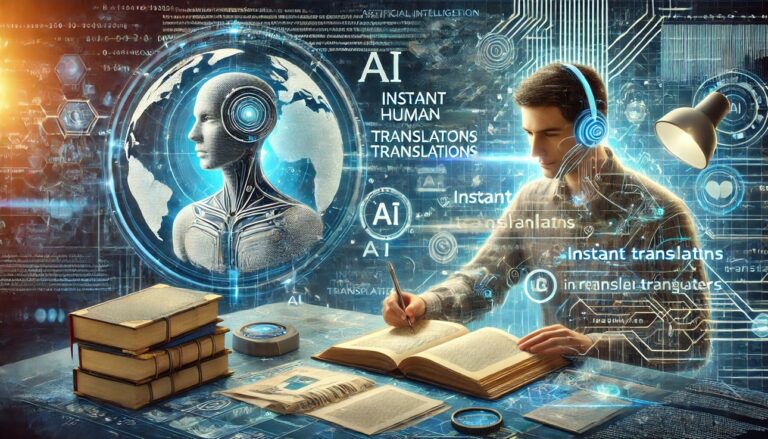How video game localisation works: the role of the translator
Video games have long been part of modern culture and unite millions of people around the world. Video game localisation is important for success in different countries, because it is not enough to simply translate the text: cultural peculiarities, linguistic nuances and even technical standards of the region must be taken into account. This is where localisation comes in.
Localisation is the process of adapting a game to a specific audience. Unlike conventional translation, which focuses solely on transferring text from one language to another, localisation includes consideration of local traditions, humour, symbols and other cultural traits. This process ensures that players perceive the game as “theirs”, wherever they live.
Proper localisation can make a game a real success, as it creates an emotional connection between the player and the product. Localisation errors, on the other hand, can lead to misunderstandings or even alienate users. How exactly does localisation work and what role do translators play in creating a perfect gaming experience? Let’s take a closer look.
What is video game localisation?
Video game localisation is a complex process that goes far beyond the usual translation of texts. It encompasses a number of aspects that help to make the game understandable, interesting and comfortable for players anywhere in the world.
Translation of textual content is the main phase of localisation. It includes the translation of character dialogues, menu texts, hints, instructions and even achievement descriptions. The translator’s task is not only to convey the meaning, but also to preserve the style, atmosphere and emotions created by the authors of the game.
Dubbing and voice synchronisation is an important part of the localisation of many games. For this purpose, professional actors are hired who not only voice the characters, but also convey their character and mood. An important task is to synchronise the voice with the lip movement animation to avoid dissonance in perception.
Humour, character names, symbols or historical realities may only be understood in certain countries. For example, jokes that work in an English version may not be understood or even acceptable to another audience. Therefore, translators and localisers take the cultural context into account in order to adapt the game to the mentality of a particular region.
Localisation also deals with technical details, such as adapting the interface to other languages. For example, text strings can change in length depending on the language, and this must be taken into account in the design. In addition, date, time, currency and measurement system formats are taken into account to make it easier for users to perceive the information.
The localisation covers all aspects of the game, from text to technical details, so that players around the world can enjoy the product at the same level as those for whom the game was originally created.

The role of a translator in the video game localisation process
A translator plays a key role in the video game localisation process, as his or her work determines the adaptation of a game to the needs of players in different countries. However, their tasks are not limited to translating texts: they are part of a multifunctional team working on the adaptation of the game.
The localisation process is a team effort involving developers, designers, voice actors, testers and project managers. Translators work with developers to clarify the context, with designers to adapt the text to the interface and with testers to check the quality of the final product. This requires not only language skills, but also an understanding of the technical and cultural aspects of the game.
One of the main challenges for a translator is to preserve the context and emotions intended by the authors of the game. For example, a joke or pun that works in one language may not have an analogue in another. In these cases, the translator has to find a creative solution that preserves the humour or tone of the original. In addition, translators are often faced with constraints such as text length or technical limitations, which adds to the complexity.
One of the most famous examples of successful localisation is The Witcher 3: Wild Hunt. Its translation was of such high quality that many players remarked on how well the dialogue, jokes and cultural references were adapted to each region. Another example is Portal 2, where humour and dialogue were skilfully adapted to each target audience while maintaining the spirit of the original.
A translator is not only a language specialist, but also a creative professional who helps to create an understandable and interesting game for players from different parts of the world. Their work is an important contribution to the overall success of the product.

The impact of localisation on the gaming experience
The localisation of video games directly influences how players perceive the story, the characters and the gameplay in general. Proper localisation creates the feeling that the game has been developed specifically for each player, regardless of their location.
High-quality localisation allows players to fully immerse themselves in the game world, understand its details and enjoy the emotions that the developers have created. For example, if characters’ dialogues sound natural in the player’s native language, a stronger emotional connection with the characters is created. In addition, adapting cultural elements such as names, humour or references to well-known phenomena makes the game more relatable to the audience.
Poor localisation, on the other hand, can ruin the experience of even a great game. A striking example is the game Final Fantasy VII, whose first English version had numerous translation errors that made the plot confusing and the characters less understandable. Another example is Call of Duty: Modern Warfare 2, where the translation for the Russian-speaking market caused a scandal due to the ill-conceived adaptation of a scene, which led to the game being banned in Russia. This last example does not mean that the scene is not true, because everything that goes beyond its alternate reality is banned there.
Cultural affinity is an important factor in attracting players. For example, adapting traditional Japanese games to the Western market often involves changing symbols that foreign audiences do not understand or explaining the context. This helps players to better understand and accept the plot without losing interest.
Quality localisation is not just about translating words, but also about creating a deep connection between the player and the game world. It helps to immerse players in the story, creates a positive impression of the game and increases its reputation among players.
Trends in video game localisation
The video game industry continues to develop dynamically, and approaches to game localisation change with it. Current trends are towards widening the audience, automating processes and adapting to new platforms and technologies.
Players expect new games to be available in their native language immediately after release. This encourages studios to create multilingual releases that support several dozen languages at the same time. This approach makes it possible to appeal to a wider audience from the earliest days, which is particularly important in a competitive market. For example, launches of popular AAA titles such as Cyberpunk 2077 or Assassin’s Creed immediately included localisations for dozens of regions.
Mobile games and indie projects, which used to ignore localisation, now actively apply this process. The reason is the globalisation of the mobile market and the availability of games for players in different countries. Independent developers are also increasingly investing in localisation to increase their chances of success, even with a limited budget. To do so, they are turning to more cost-effective solutions, such as machine translations or freelance translators.
Using generative AI
Artificial intelligence is becoming an integral part of localisation. Generative AI models can create adapted texts and even synthesise voices for localised audio. This speeds up the localisation process considerably and reduces costs. For example, AI can quickly produce a basic version of a translation that can be improved by professional translators. In addition, voice synthesis technologies make it possible to create audio for dubbing without the need for actors in each region, which is especially useful for mobile games.
Current trends show that localisation is becoming an increasingly important component of a successful launch. Innovations such as multilingual releases and the use of AI open up new opportunities for studios, allowing them to attract more players and make their gaming experience even more immersive.
Conclusion.
Video game localisation is more than just translating texts. It is an art of adaptation that allows players from all over the world to feel part of the game’s universe, regardless of their language or cultural background. In today’s highly competitive industry, high-quality localisation is becoming a key factor in a game’s global success.
Professional translators play a crucial role in this process. They not only convey meaning, but also create an emotional connection between the player and the game, taking cultural nuances into account, while maintaining the unique tone and style. Their work is a bridge between the developers’ intentions and the players’ experience.







